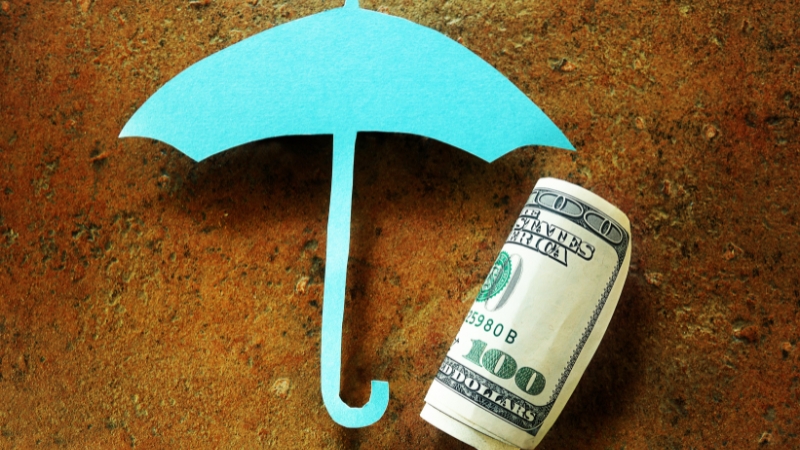According to data from Quadrant Information Services and the U.S. Census Bureau’s 2023–2025 housing cost reports, states like Nebraska, Florida, Oklahoma, and Louisiana lead the nation in homeowners insurance rates in 2025.
The national average premium for $300,000 in dwelling coverage now sits at $2,258 per year, or roughly $188 per month. But that average obscures dramatic differences: in Nebraska, rates exceed $5,600 per year, while in Vermont, the average premium is less than $850.
Table of Contents
ToggleWhy Homeowners’ Insurance Rates Are Rising in 2025

Premium increases in 2025 are being driven by a perfect storm of risk factors. According to the Insurance Information Institute, the U.S. property/casualty insurance industry saw more than $100 billion in natural catastrophe losses in 2024, the third time in four years. This included:
At the same time, rebuilding costs are higher due to inflation in materials and labor, which increases replacement cost estimates—the foundation of homeowners’ insurance pricing.
Legal trends are also pushing rates upward. Mark Friedlander of the Insurance Information Institute explains that a rising number of litigated claims, often driven by aggressive marketing from law firms targeting disaster victims, has further increased insurer payouts and policyholder premiums.
Top 10 States With the Highest Average Homeowners Insurance Premiums in 2025
Based on updated 2025 data from Quadrant Information Services:
Rank
State
Average Yearly Premium
Average Monthly Premium
Above National Avg. ($2,258)
Key Risk Factors
1
Nebraska
$5,640
$470
+$3,382
Tornadoes, hail, severe storms
2
Florida
$5,488
$457
+$3,231
Hurricanes, flooding, litigation, sinkholes
3
Oklahoma
$4,643
$387
+$2,386
Tornadoes, wind, and land exposure
4
Kansas
$4,287
$357
+$2,029
Hail, tornadoes
5
Louisiana
$4,135
$345
+$1,877
Hurricanes, flooding, and legal costs
6
Texas
$3,973
$331
+$1,715
Wind, wildfires, hail
7
Kentucky
$3,354
$280
+$1,097
Storms, terrain risk, and rebuild inflation
8
Mississippi
$3,339
$278
+$1,081
Hurricanes, rural rebuild cost
9
Arkansas
$3,151
$263
+$893
Storms, severe weather
10
Colorado
$3,167
$264
+$910
Wildfires, hail, and rebuilding costs
These states are typically characterized by high exposure to climate-related risks, but legal and economic factors amplify the costs.
State-by-State Table: 2025 Homeowners Insurance Premiums (Dwelling Coverage: $300,000)
State
Annual Premium
Monthly Premium
Difference from National Avg.
Alabama
$2,989
$249
+$732
Alaska
$933
$78
–$1,325
Arizona
$2,245
$187
–$13
Arkansas
$3,151
$263
+$893
California
$1,429
$119
–$829
Colorado
$3,167
$264
+$910
Connecticut
$1,660
$138
–$598
Delaware
$964
$80
–$1,293
Florida
$5,488
$457
+$3,231
Georgia
$1,994
$166
–$264
Hawaii
$1,224
$102
–$1,034
Idaho
$1,293
$108
–$965
Illinois
$2,265
$189
+$7
Indiana
$1,712
$143
–$545
Iowa
$2,197
$183
–$61
Kansas
$4,287
$357
+$2,029
Kentucky
$3,354
$280
+$1,097
Louisiana
$4,135
$345
+$1,877
Maine
$1,243
$104
–$1,015
Maryland
$1,671
$139
–$587
Massachusetts
$1,703
$142
–$555
Michigan
$2,117
$176
–$141
Minnesota
$2,628
$219
+$371
Mississippi
$3,339
$278
+$1,081
Missouri
$2,302
$192
+$44
Montana
$2,511
$209
+$254
Nebraska
$5,640
$470
+$3,382
Nevada
$1,031
$86
–$1,227
New Hampshire
$1,026
$86
–$1,232
New Jersey
$1,194
$100
–$1,063
New Mexico
$2,205
$184
–$52
New York
$1,752
$146
–$506
North Carolina
$2,055
$171
–$202
North Dakota
$2,709
$226
+$451
Ohio
$1,303
$109
–$954
Oklahoma
$4,643
$387
+$2,386
Oregon
$1,011
$84
–$1,247
Pennsylvania
$1,245
$104
–$1,013
Rhode Island
$2,324
$194
+$66
South Carolina
$2,374
$198
+$117
South Dakota
$3,049
$254
+$791
Tennessee
$2,499
$208
+$241
Texas
$3,973
$331
+$1,715
Utah
$1,262
$105
–$995
Vermont
$830
$69
–$1,428
Virginia
$1,664
$139
–$594
Washington
$1,513
$126
–$745
West Virginia
$1,009
$84
–$1,248
Wisconsin
$1,219
$102
–$1,038
Wyoming
$1,306
$109
–$952
What Causes These State-Level Differences?

Homeowners’ insurance rates vary significantly from state to state due to a mix of environmental, legal, regulatory, and economic factors.
While premiums reflect the basic cost of insuring a home, they’re also a signal of risk, and in 2025, that risk is rising sharply in some regions.
1. Catastrophic Weather and Environmental Risk
The biggest driver of high premiums continues to be extreme weather events, which have become both more frequent and more costly. In 2024 alone, according to the Insurance Information Institute, U.S. insurers faced over $100 billion in catastrophe-related losses, including five hurricanes and historic levels of tornado and convective storm activity.
- Nebraska, which recorded its highest tornado count in 20 years, now has the highest average premium in the U.S. at $5,640 per year.
- Florida, regularly impacted by hurricanes and flooding, follows closely at $5,488.
- Colorado faces wildfire and hail risks that drive its average to over $3,100 annually.
Insurance carriers price these risks into premiums using historical weather data, predictive modeling, and regional loss trends. As climate volatility increases, so do the rates.
2. Litigation and Legal Environment
States like Florida and Louisiana experience unusually high rates of insurance litigation, which directly raises premiums for everyone.
According to Mark Friedlander of the Insurance Information Institute, legal system abuse — where billboard attorneys encourage claim disputes and lawsuits — inflates claim costs, leading insurers to either exit markets or raise prices substantially to remain solvent.
This legal activity doesn’t just impact high-value claims. It makes all claims more expensive to resolve, especially in disaster-prone states where thousands of households file at once.
3. Rebuilding Costs and Inflation
“The construction industry in America is facing an extreme labor shortage, roughly 650,000 workers, slowing completion of construction projects from residential homes to infrastructure to hospitals.” https://t.co/ZeYOrKeuic pic.twitter.com/M5QVlLhWA8
— Scott Lincicome (@scottlincicome) July 29, 2023
Premiums are also driven by what it would cost to fully replace your home, not just its current value. Since 2022, the U.S. has faced severe inflation in construction materials and skilled labor, due to supply chain disruptions and workforce shortages.
A 2,000-square-foot home that cost $250,000 to rebuild in 2020 requires $325,000 or more in replacement value. That increase pushes up the dwelling coverage required — and thus, your annual premium.
4. Regulatory Frameworks and Market Competition
Insurance is regulated at the state level. Some states allow insurers to adjust rates freely based on actuarial data; others impose strict controls on pricing and underwriting, which can restrict competition and discourage companies from doing business locally.
For example:
- California, despite being wildfire-prone, has a relatively low average premium ($1,429) in part because insurers face strict rate filing rules that limit rapid price hikes.
- In contrast, Florida’s market has seen numerous insurer exits, resulting in less competition and higher costs passed to consumers.
5. Location-Specific Risk Factors
Other factors tied to geography — such as proximity to water, elevation, soil stability, and urban density — affect risk ratings. Floodplains, wildfire zones, and coastal properties all require different underwriting rules. Some perils, like flooding and earthquakes, are not covered by standard homeowners policies and require separate coverage, which can further increase total annual insurance spending.
How Mortgage Status Affects Premiums
Your homeowners’ insurance premium is also closely tied to whether or not your home has a mortgage. According to the U.S. Census Bureau’s 2023–2025 American Community Survey data, homeowners with a mortgage pay significantly more in annual property insurance than those who own their homes outright.
Why Mortgage Holders Pay More

- Lender Requirements: Mortgage lenders typically require higher liability limits and full replacement cost coverage as a condition of the loan. That means the policy must be robust enough to fully rebuild the home in the event of a loss, not just cover partial damage.
- Escrowed Payments: Most lenders bundle property taxes and insurance premiums into the monthly mortgage payment through escrow accounts. While convenient, this structure can mask increases in premium costs and delay policy adjustments.
- More Comprehensive Coverage: Mortgage-backed policies often include mandatory endorsements like water backup, ordinance and law coverage, and extended replacement cost, all of which increase the policy’s total cost.
Florida as a Case Study
In 2023, Florida homeowners with a mortgage paid a median of $2,273 per year for property insurance, according to Axios. Those who owned their homes outright paid $1,442 — a $831 difference, despite living in the same risk zone. This pattern holds in many high-risk states, including Colorado, Louisiana, and Oklahoma.
For those with large homes or high net worth, the combination of premium requirements and legal exposure creates additional financial risk, which brings us to a crucial consideration: umbrella insurance.
Why High-Cost Insurance States May Also Need Umbrella Coverage
If you live in a state with high homeowners insurance costs, chances are you’re also exposed to greater liability risk, whether due to storm damage lawsuits, injured guests, or property claims from neighbors. For that reason, umbrella insurance is increasingly recommended as a supplemental layer of protection.
What Is Umbrella Insurance?
Umbrella insurance is a personal liability policy that sits on top of your existing homeowners (and auto) insurance. It covers legal fees, judgments, and damages that exceed the liability limits of your main policy, as you can see on https://www.sofi.com/learn/content/what-is-umbrella-insurance/.
- For example, if your homeowners insurance covers $300,000 in liability and you’re sued for $700,000 after an injury on your property, umbrella insurance would cover the remaining $400,000 (after your deductible).
- Umbrella policies can also apply to incidents not directly related to your home, such as libel, slander, or incidents involving family members.
What It Covers (And Doesn’t)
Covered
Not Covered
Legal defense fees
Your own medical costs or property damage
Judgments from lawsuits over injuries
Criminal actions or intentional harm
Property damage lawsuits (you’re liable)
Business-related claims
Liability for family members’ actions
Contractual liabilities
Worldwide coverage (in many cases)
War, armed conflict, and some foreign events
Cost and Requirements

According to the Insurance Information Institute, a $1 million umbrella policy typically costs $150 to $300 per year. Additional coverage (e.g., $2M or $3M) can be purchased for under $100 per million.
However, you must carry minimum underlying limits, such as:
- $300,000 liability on your homeowners policy
- $250,000/$500,000 liability on your auto insurance
In other words, umbrella coverage requires a solid insurance foundation before it can activate, which ties back to why homeowners in high-premium states often end up paying more overall.
Methodology
This article was developed using the most recent 2025 homeowners insurance rate data from Quadrant Information Services, which tracks average premiums by state for $300,000 in dwelling coverage. We cross-referenced these figures with regional cost breakdowns and property ownership data from the U.S. Census Bureau’s American Community Survey (2023–2025).
Expert commentary, including insights from the Insurance Information Institute, was used to explain legal and weather-related drivers of premium increases. Real-world case studies from states like Florida, Nebraska, and Louisiana were included to contextualize the numbers.
Additional consumer risk factors, including mortgage status and liability exposure, were integrated based on federal housing reports and insurance industry standards. Umbrella insurance considerations were added to inform readers about optional coverage that complements high-risk policies.
Final Thoughts: Managing High Insurance Costs
If you live in a high-cost state, you’re not powerless. Here are ways to lower your premium:
- Increase your deductible if you have a savings buffer
- Bundle your policies (home + auto)
- Install safety features like smoke alarms or a monitored alarm system
- Shop rates annually with an independent agent
As rates continue to climb in 2025, smart homeowners will need to regularly reassess their policies and find the balance between cost and protection.
Related Posts:
- Health Insurance Coverage - National Health…
- US Health Insurance System Is Driving Americans to the Brink
- Private vs. Public Health Insurance - Which Covers…
- 10 US. States With the Highest Alcoholism Rates in 2025
- The 8 States With the Highest Car Accident Fatality…
- Bipolar Disorder Hospitalizations 2025 - Which…








